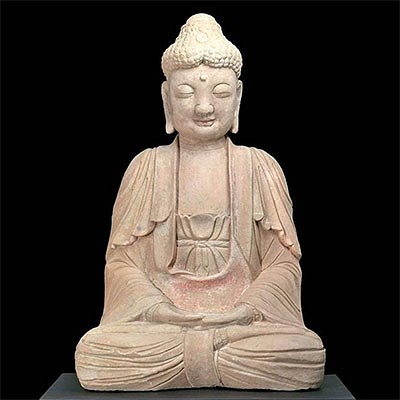Rare Egyptian Alabaster Lidded Jar - Piriform Shape
Lot 11
About Seller
Artemis Fine Arts
686 S Taylor Ave, Ste 106
Louisville, CO 80027
United States
Selling antiquities, ancient and ethnographic art online since 1993, Artemis Gallery specializes in Classical Antiquities (Egyptian, Greek, Roman, Near Eastern), Asian, Pre-Columbian, African / Tribal / Oceanographic art. Our extensive inventory includes pottery, stone, metal, wood, glass and textil...Read more
Categories
Estimate:
$4,000 - $6,000
Absentee vs Live bid
Two ways to bid:
- Leave a max absentee bid and the platform will bid on your behalf up to your maximum bid during the live auction.
- Bid live during the auction and your bids will be submitted real-time to the auctioneer.
Bid Increments
| Price | Bid Increment |
|---|---|
| $0 | $25 |
| $300 | $50 |
| $1,000 | $100 |
| $2,000 | $250 |
| $5,000 | $500 |
| $10,000 | $1,000 |
| $20,000 | $2,500 |
| $50,000 | $5,000 |
| $100,000 | $10,000 |
| $200,000 | $20,000 |
About Auction
By Artemis Fine Arts
Feb 18, 2021
Set Reminder
2021-02-18 10:00:00
2021-02-18 10:00:00
America/New_York
Bidsquare
Bidsquare : Exceptional Antiquities, Asian, Ethnographic
https://www.bidsquare.com/auctions/artemis-gallery/exceptional-antiquities-asian-ethnographic-6373
Museum-worthy examples of Egyptian, Greek, Roman, Etruscan, Near Eastern, Far East / Asian, Pre-Columbian, African / Tribal, Oceanic, Native American, Spanish Colonial, Russian, Fossils, Ancient Jewelry, Fine Art, so much more! Artemis Fine Arts info@artemisgallery.com
Museum-worthy examples of Egyptian, Greek, Roman, Etruscan, Near Eastern, Far East / Asian, Pre-Columbian, African / Tribal, Oceanic, Native American, Spanish Colonial, Russian, Fossils, Ancient Jewelry, Fine Art, so much more! Artemis Fine Arts info@artemisgallery.com
- Lot Description
Egypt, Late Dynastic Period, 26th to 31st Dynasty, ca. 664 to 332 BCE. A splendid piriform jar, hand-carved from sandy-beige alabaster with pale peach and creamy white spotted and banded inclusions. The bulbous body rests upon a planar base, tapering to a corseted neck with a flared, broad rim, drilled round interior, and a discoid lid. The interior cavity was drilled out using progressively finer drill bits and abrasive sand, and the protruding rings denote the shallow depths to which individual layers could be bored out. A superb stone vessel with expert artistry. Alabaster, which is a form of gypsum or calcite, was quarried along the length of the Nile River, from Giza to just south of Luxor, and the Egyptians made carved alabaster forms famous throughout the ancient world. A thousand years later, while less common than black-figure or red-figure techniques, the Greeks made vessels like this out of pottery and painted them white to imitate this beautiful stone. Alabaster jars, such as this one, were used to store unguents or ointments for tomb offerings. A truly stunning example from ancient Egypt! Size: 5.25" in diameter x 6" H (13.3 cm x 15.2 cm)
Provenance: private New York, New York, USA collection; ex-private prominent D.K. collection, New York, USA, acquired in the 2000s
All items legal to buy/sell under U.S. Statute covering cultural patrimony Code 2600, CHAPTER 14, and are guaranteed to be as described or your money back.
A Certificate of Authenticity will accompany all winning bids.
We ship worldwide and handle all shipping in-house for your convenience.
#162157Collection label on base. A few repairs to rim and lid with paint visible. Expected abrasions and miniscule chips/nicks commensurate with age. Otherwise, excellent with lovely earthen deposits on interior.Condition
- Shipping Info
-
All shipping is handled in-house for your convenience. Your invoice from Artemis Gallery will include shipping calculation instructions. If in doubt, please inquire BEFORE bidding for estimated shipping costs for individual items.
-
- Buyer's Premium



 EUR
EUR CAD
CAD AUD
AUD GBP
GBP MXN
MXN HKD
HKD CNY
CNY MYR
MYR SEK
SEK SGD
SGD CHF
CHF THB
THB
















